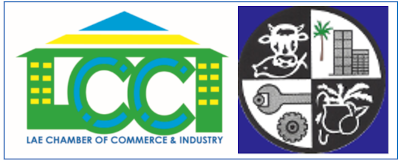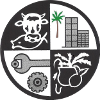Asian Development Bank analysis shows just how vulnerable Pacific nations are to natural disasters, but what can be done to better manage the risk? Wayne Dorgan from leading Papua New Guinea insurer Pacific MMI calls on disaster co-ordinators in the region to consult more closely with the insurance industry.
The Asian Development Bank’s (ADB) July Pacific Economic Monitor highlights the Pacific region’s vulnerability to natural disasters, pointing out that initial estimates of Cyclone Pam’s impact on Vanuatu will be 64 per cent of its GDP.
According to the report, the impact of cyclones on long-term growth may be higher than initially thought, stating that: ‘a catastrophic cyclone can reduce per capita incomes by 7.4 per cent 20 years later.’
It concludes that cyclones and other hazards can reverse Pacific development but that investment in disaster risk reduction could have high payoffs.
However, investment in global disaster risk reduction accounted for only 0.6 per cent of international assistance from 1991 to 2010.
Managing the risk
The Managing Director of PNG-based Pacific MMI Insurance, Wayne Dorgan, tells Business Advantage PNG that spending on preparedness was quite restricted ‘due the status of most Pacific economies and post-disaster spending relies greatly upon First World neighbours helping out after the event’.
‘Pacific Nations need to risk manage this better than what is done now,’ he says. ‘The limiting factors around this are lack of urgency, lack of funding, and a lack of a unified forum to do it through.’
Risk assessment
Dorgan said consultation with the insurance industry and disaster officials would help deliver a co-ordinated approach to the preparedness and response to an event.
‘Disaster management throughout the Pacific lacks one large piece of the jigsaw—consultation with the insurance industry, which at present is non-existent.
‘The insurance industry has statistics and knowledge built up over years that would aid any development going forward. Without the insurance industry, some of these economies may not ever recover from a sizeable event. And it doesn’t matter how much planning is done, if it doesn’t include the insurance industry, you may find it may all be in vain,’ Dorgan said.
He believes improved consultation between the two parties would result in a coordinated approach, a critical path forward and a forum to progress matters:
‘Having everybody informed and on the same page will assist all parties. Insurance may replace the physical assets such as buildings and plant, but it will not be able to save human life. That is where the preparedness comes in,’ Dorgan said.
‘They (meetings) should be annual and funded by resource partners, NGOs and the respective governments. All too often, governments fund the back office operations of a disaster centre and forget to provide a path for the rapid funding of relief in the case of a major event.’
Catastrophe risk insurance
Dorgan said a pilot World Bank program, the Pacific Catastrophe Risk Insurance Pilot Program may be one model worth following. Te program designed to help Pacific nations insure their exposures through a form of risk insurance, with donor countries paying the premiums). This resulted in smaller payouts than needed compared to the actual losses.
‘If we take the 1994 Rabaul event as an example (in PNG), only 25 per cent of the losses incurred in that event were insured. That percentage hasn’t much changed in the Pacific, up to this day,’ he explained.
‘Insurance as a percentage of the GDP is quite small by comparison to developing countries.’

